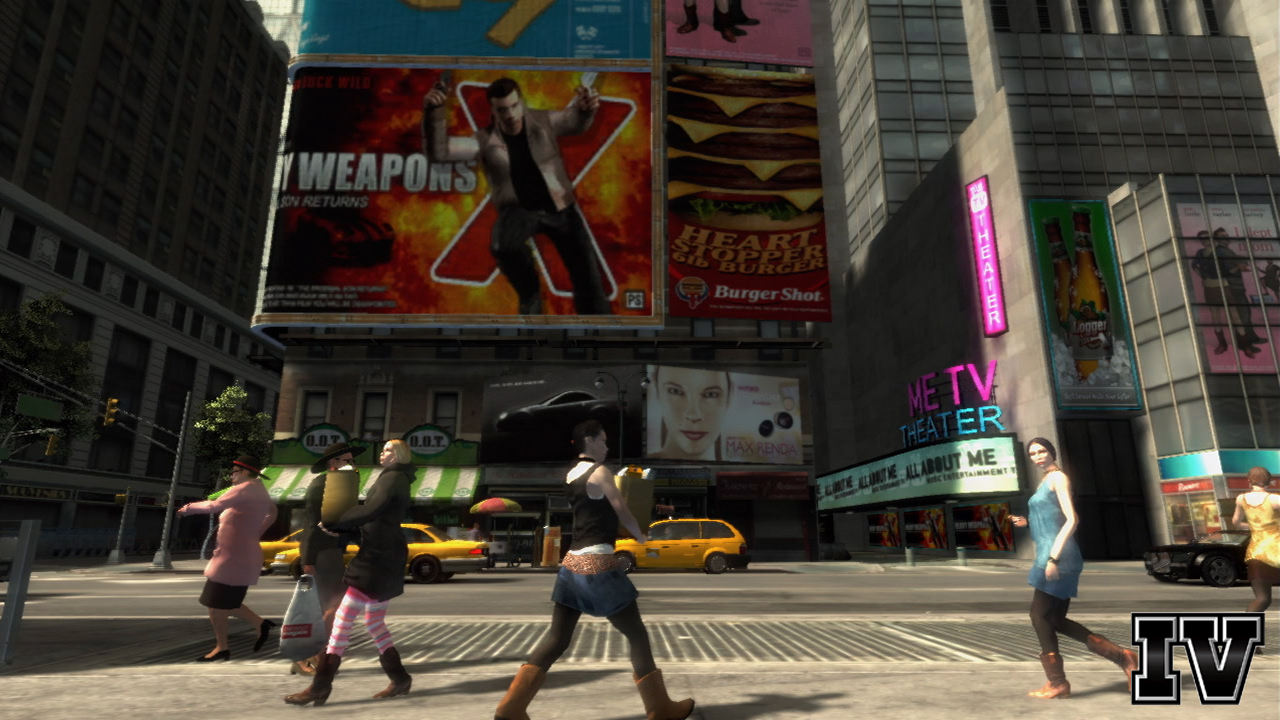Hoo - frackin - ray.
I've finally finished my monster assignment on "Creating the First Person Learner: Educational Applications of the First Person Shooter game genre". I'll bang on more about it later but I have to say it was pretty interesting and I'm pretty happy with what I managed to come up with. (I just hope that my lecturer shares these feelings)
The list of papers, books, websites and whatever that I referenced is pretty long but offers a bit of an insight into the kinds of stuff that a lot of people get paid to do research on. Frankly, if they are, why not me? :)
(I've bolded the ones that I thought were really interesting if you're into games)
Bandura, A. (1977). Social Learning Theory. New York: General Learning Press.
Bogost, I. (2007) Persuasive Games: Casual as in sex, not casual as in Friday Gamasutra (2844) Retrieved June 6th, 2008 fromhttp://www.gamasutra.com/view/feature/1937/persuasive_games_casual_as_in_.php
Cheng, P. (2007) Waiting for something to happen: Narratives, Interactivity and Agency and the Video Game Cut-Scene Proceedings of DiGRA 2007 Conference: FuturePlay . Tokyo, Japan: DiGRA
Duffy, J. (2006) GDC: Top 10 Video Game Research Findings Gamasutra (2645) Retrieved June 6th, 2008 from http://www.gamasutra.com/view/feature/2645/gdc_top_10_video_game_research_.php
Eastin, M. and Griffiths, R. (2006) Beyond the Shooter Game: Examining Presence and Hostile Outcomes Among Male Game Players. Communication Research 2006; 33; 448 Retrieved 31st May, 2008 from http://crx.sagepub.com/cgi/content/abstract/33/6/448Endestad, T. and Torgerson, L (2003) Computer games and violence: Is there really a connection? Proceedings of DiGRA 2003 Conference: Level Up . Utrecht, The Netherlands: DiGRA
Falstein, N. (2008) Design Language: The Portal Paradoxes Gamasutra (3616) Retrieved June 6th, 2008 from http://www.gamasutra.com/view/feature/3616/design_language_the_portal_.php Freeman, D. (2002) Four ways to use symbols to add emotional depth to games Gamasutra (20020724) Retrieved June 7th, 2008 from http://www.gamasutra.com/features/20020724/freeman_01.htm
Frome, J. (2007) Eight Ways Videogames Generate Emotion Proceedings of DiGRA 2007 Conference: FuturePlay . Tokyo, Japan: DiGRA
Fuchs, M. (2001) Expositur - A Virtual Knowledge Space (Theory). Retrieved May 25, 2008 from Syl.Eckermann website http://syl-eckermann.net/expositur/theory.html
Fuchs, M. & Eckermann, S. (2001) From “First Person Shooter” to Multi-User Knowledge Spaces. In F. Nack (Ed.) Proceedings COSIGN 2001 - 1st Conference on Computational Semiotics for Games and New Media (pp. 83-87). CWI, Amsterdam. Gagne, R., Briggs, L., & Wagner, W. (1992). Principles of Instructional Design. Fort Worth: Harcourt Brace Javanovich. pp 185-204.
Galarneau, L. (2005) Authentic Learning Experiences Through Play: Games, Simulations and the Construction of Knowledge. Proceedings of DiGRA 2005 Conference: Changing Views - Worlds in Play . Vancouver, BC: DiGRAGee, J. (2004) Learning by Design: Games as learning machines Gamasutra (2056) Retrieved June 7th, 2008 from http://www.gamasutra.com/view/feature/2056/learning_by_design_games_as_.php
Ghozland, D. (2007) Designing for Motivation Gamasutra (1419) Retrieved June 6th, 2008 from http://www.gamasutra.com/view/feature/1419/designing_for_motivation.php
Grimshaw, M. and Schott, G. (2007) Situated Gaming as a sonic experience: The acoustic ecology of First-Person Shooters Proceedings of DiGRA 2007 Conference: FuturePlay . Tokyo, Japan: DiGRA
Guttler, C. and Johansson, T. (2003) Spatial principles of level-design in multi-player first-person shooters Proceedings of the 2nd workshop on network and system support for games (pp. 158 - 170) New York, NY: ACM
Harris, J. (2007) Game Design Essentials: 20 Unusual Control Schemes Gamasutra (1937) Retrieved June 6th, 2008 from http://www.gamasutra.com/view/feature/2844/game_design_essentials_20_unusual_.php
IGDA (2006) International Game Developers Association 2006 Casual Games White Paper retrieved June 8th, 2008 from http://www.igda.org/casual/IGDA_CasualGames_Whitepaper_2006.pdf
Jarvinen, A. (2007) Introducing Applied Ludology: Hands-on methods for Game Studies Proceedings of DiGRA 2007 Conference: FuturePlay . Tokyo, Japan: DiGRAJohnson, B. (2001) Great Expectations: Building a player vocabulary Gamasutra (3052) Retrieved June 7th, 2008 from http://www.gamasutra.com/view/feature/3052/great_expectations_building_a_.php
Kane, B. (2003) 34 Ways to put emotion into games Gamasutra (2884) Retrieved June 7th, 2008 from http://www.gamasutra.com/view/feature/2884/34_ways_to_put_emotions_into_games.php
Jonsson, E. (200?) If looks could kill: An evaluation of eye tracking in computer games. Masters Thesis, Department of Numerical Analysis and Computer Science, Royal Institution of Technology, Stockholm.
Kearney, P. (2005) Cognitive Callisthenics: Do FPS computer games enhance the player’s cognitive abilities? Proceedings of DiGRA 2005 Conference: Changing Views - Worlds in Play . Vancouver, BC: DiGRA Kent, S. (2004) Manhunt to Mortal Kombat: The use and future use of violence in games Gamasutra (2056) Retrieved June 7th, 2008 from http://www.gamasutra.com/view/feature/2056/learning_by_design_games_as_.php
Kuhlman, T (2008) Motivate your learner with these 5 simple tips The Rapid E-Learning blog Retrieved June 8th, 2008 from http://www.articulate.com/rapid-elearning/motivate-your-learners-with-these-5-simple-tips
Larsen, T. (1999) Designing games for novice gamers Gamasutra (3338) Retrieved June 7th, 2008 from http://www.gamasutra.com/view/feature/3338/designing_games_for_novice_gamers.php
Learning Theories Knowledgebase (2008, June). ADDIE Model at Learning-Theories.com. Retrieved June 8th, 2008 from http://www.learning-theories.com/addie-model.html
Learning Theories Knowledgebase (2008, June). Behaviorism at Learning-Theories.com. Retrieved June 8th, 2008 from http://www.learning-theories.com/behaviorism.html
Learning Theories Knowledgebase (2008, June). Situated Learning Theory (Lave) at Learning-Theories.com. Retrieved June 8th, 2008 from http://www.learning-theories.com/situated-learning-theory-lave.html
Learning Theories Knowledgebase (2008, June). Social Development Theory (Vygotsky) at Learning-Theories.com. Retrieved June 8th, 2008 from http://www.learning-theories.com/vygotskys-social-learning-theory.html
Learning Theories Knowledgebase (2008, June). Social Learning Theory (Bandura) at Learning-Theories.com. Retrieved June 8th, 2008 from http://www.learning-theories.com/social-learning-theory-bandura.html
Magnussen, R. (2007) Teacher roles in learning games - When games become situated in schools Proceedings of DiGRA 2007 Conference: FuturePlay . Tokyo, Japan: DiGRA
McGrath, D. and Hill, D. (2004) UnrealTriage: A Game-based Simulation for Emergency Response Institute for Security Technology Studies, Dartmouth College. Retrieved 31st May 2008 from www.ists.dartmouth.edu/library/58.pdf
McMahan, A. (2003) Immersion, Engagement and Presence: A method for Analysing 3-D Video games. In Wolf, M. and Perron, B (Ed.), The Video Game Theory Reader (pp.67 - 86) New York: Routledge
Michael, D. and Chen, S. (2005) Proof of Learning: Assessment in Serious Games Gamasutra (2433) Retrieved June 7th, 2008 from http://www.gamasutra.com/view/feature/2433/proof_of_learning_assessment_in_.php
Moore, C. (2008) How to turn your learners into compulsive completers Making Change - ideas for lively elearning Retrieved June 8th, 2008 from http://blog.cathy-moore.com/?p=204
O’Connell, M. (2008) ADDIE Design Process Canberra, ACT: Flex.Ed/CIT
Oliver, M. and Pelletier, C. (2005) The things we learned on Liberty Island: designing games to help people become competent game players. Proceedings of DiGRA 2005 Conference: Changing Views - Worlds in Play . Vancouver, BC: DiGRA
Paras, B (2003) Learning to Play: The design on in-game training to enhance videogame experience
Simon Fraser University 2003
Peters, J. (2007) World of Borecraft: Never play a videogame that’s trying to teach you something Slate 2169019 Retrieved June 8th, 2008 from http://www.slate.com/id/2169019/
Pinchbeck, D. (2007) Counting barrels in Quake 4: affordances and homodiegetic structures in FPS worlds Proceedings of DiGRA 2007 Conference: FuturePlay . Tokyo, Japan: DiGRA
Pinchbeck, D., Stevens, B., Van Laar, D., Hand, S., Newman, K. 2006. Narrative, agency and observational behavioiur in a first person shooter environment. Presented at Narrative AI and Games AISOB Symposium, Bristol, UK, April 2006 Pinchbeck, D. (2008) Story and Recall in First-Person Shooters [Electronic Version] International Journal of Computer Games Technology Volume 2008 pp.1-7Rambusch, J., Jakobsson, P. and Pargman, D. (2007) Exploring E-sports: A Case Study of Gameplay in Counter-Strike Proceedings of DiGRA 2007 Conference: FuturePlay . Tokyo, Japan: DiGRA
Ryan, T. (1999) Beginning Level Design, Part 1 Gamasutra (3329) Retrieved June 7th, 2008 from http://www.gamasutra.com/view/feature/3329/beginning_level_design_part_1.php
Ryan, T. (1999) Beginning Level Design, Part 2: Rules to Design by and Parting Advice Gamasutra (3332) Retrieved June 7th, 2008 from http://www.gamasutra.com/view/feature/3332/beginning_level_design_part_2_.php
Sorensen, B. and Meyer, B. (2007) Serious Games in language learning and teaching - a theoretical perspective Proceedings of DiGRA 2007 Conference: FuturePlay . Tokyo, Japan: DiGRA
Sylvester, T. (2005) Decision-based gameplay design Gamasutra (2264) Retrieved June 7th, 2008 from http://www.gamasutra.com/view/feature/2264/decisionbased_gameplay_design.php
Taylor, C. (2007) Reward Players, Don’t Punish them! Game Daily (70504) Retrieved June 8th, 2008 from http://www.gamedaily.com/articles/features/reward-players-dont-punish-them/70504/?biz=1
Thompson, J. (2006, May 24) Proposal is needed to prevent a Louisiana “Columbine” Shreveport Times
Thompson, J. (2005) JackThompson.org Retrieved June 1st, 2008 from http://www.jackthompson.org/index.htm
Wilson, G. (2006) Off with their HUDs!: Rethinking the Heads-Up Display in Console game design Gamasutra (2538) Retrieved June 7th, 2008 from http://www.gamasutra.com/view/feature/2538/off_with_their_huds_rethinking_.php








